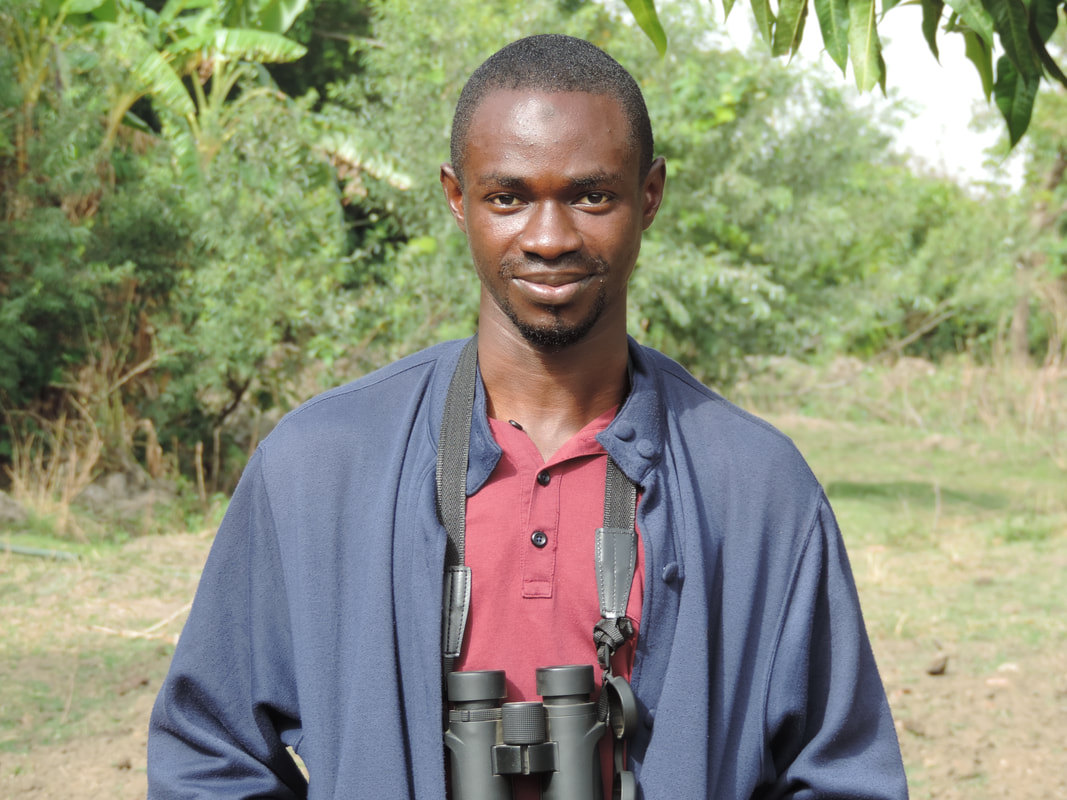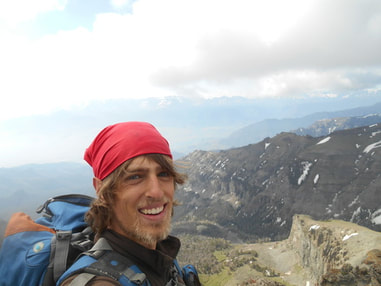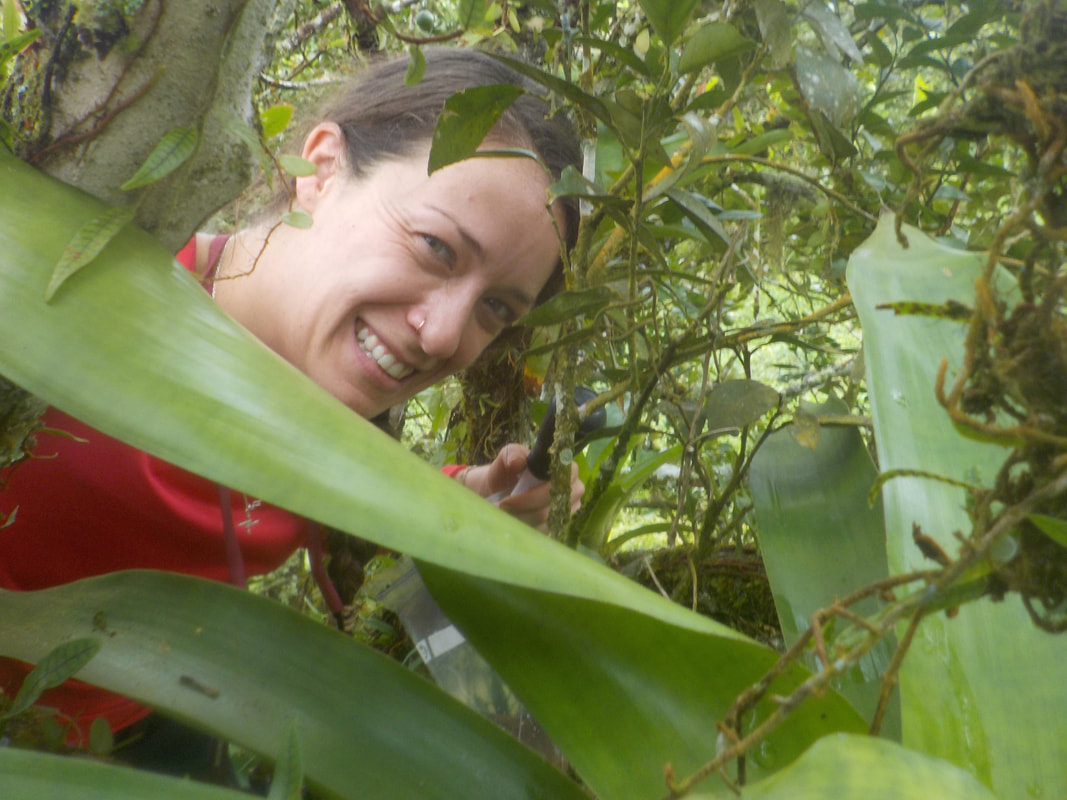Principal Investigator
Current Students
Previous Students |
UMARFAROOQ ABDULWAHAB Umarfarooq is an Ecology PhD student in the Watershed sciences department, and is from Kogi state, middle belt of Nigeria. He received a BSc in Environmental Biology from the University of Maiduguri and an MSc in Conservation Biology from the A.P Leventis Ornithological Research Institute, University of Jos, Nigeria. Currently at Utah State University, Umarfarooq is part of a collaborative project focusing on the application of eDNA, species distribution modeling, and decision support systems to amphibian conservation science. His interests border on the various aspects of field research including landscape and spatial ecology, population ecology and behavioral ecology to answer questions that have application for the conservation of plants, birds, amphibians and other aquatic vertebrates. He relaxes by birdwatching, hiking and meeting people. Umarfarooq is co-advised by Dr. Charles Hawkins. Contact: [email protected] or [email protected] MARSHALL WOLF Marshall is an Ecology PhD student in the Watershed Science Department studying landscape scale restoration planning for riparian communities. He gained diverse research experiences working with tree-rings to explain riparian geomorphology and using stable isotopes to explain the ecology of aquatic ecosystems while earning his BSc in Ecosystem Science from Colorado State University. After undergrad, he worked for Oregon Dept. of Fish and Wildlife conducting stream habitat and aquatic species surveys for a year before transitioning to a position investigating hydrologic and biogeochemical proccess at UC Berkeley. At USU he will be using conservation planning techniques in order to better understand the relationship between beaver restoration and aquatic community function at landscape scales. Between classes you might find him lapping Logan's mountain bike trails, stream snorkeling the Logan River, or patrolling for powder atop one of the many peaks in eyeshot of the Univeristy. Contact - [email protected] Cat McClure
Cat joined the lab as a PhD student in August of 2020. Her research is looking at how predators cause their prey to change their behavior and life history, and how this then goes on to impact the structure of communities. Cat's work involves using laboratory microcosms, and a tropical bromeliads in Costa Rica. When she is not working on her PhD she is a competitive ultrarunner. [email protected] |
|
ANDREW WITT
Andrew competed his MSc in April of 2018 and is now working in wildlife management for the state of Colorado. From Denver, Colorado, Andrew received a B.S. in Ecology and Evolutionary Biology, and a B.S. in Environmental Sciences from the University of Colorado-Boulder. Andrew’s research involved using geospatial technologies to prioritize conservation efforts for Alaskan salmon habitat threatened by anthropogenic changes to the landscape. His research interests include large-scale conservation ecology, and how to balance conservation efforts with human expansion. Contact: [email protected] Website: sites.google.com/view/andywitt-spatialecology/home Witt, A*., and Hammill, E. 2018. Using systematic conservation planning to establish management priorities for freshwater salmon conservation, Matanuska-Susitna Basin, AK, USA. Aquatic Conservation: Marine and Freshwater Ecosystems 28:4 JOSH EPPERLY Josh completed his MSc in May of 2018, and is now working in watershed management for the state of Utah. In addition to his Masters Thesis, Josh also led an interdisciplinary paper that looked at why watersheds on state boundaries are more likely to be impaired. Epperly, J*., Witt, A*., Haight, J*., Washko, S., Atwood, T. B., Brahney, J., Brothers, S., and Hammill, E. 2018. Relationships between borders, management agencies, and the likelihood of watershed impairment. PLOS One 13(9): e0204149 |
|
JENNIFER WEATHERED
Jenn completed her MSc in May of 2019, and is now working in watershed management for the state of Montana. Jenn led a series of projects in Costa Rica that looked at how the evolution of pesticide resistance in mosquitoes affected their distributions on the landscape. Her work has been featured in National Geographic, and is currently used in landscape management in Costa Rica. Weathered, J*., and Hammill, E. 2019. Adaptation to agricultural pesticides may allow mosquitoes to colonize novel habitats. Oecologia 190. Clancy, N. G., Draper, J. P., Wolf, J. M*., Abdulwahab, U. A*., Pendleton, M. C., Brothers, S., Brahney, J., Weathered, J*., Hammill, E., Atwood, T. B. (2020). Protecting endangered species in the USA requires both public and private land conservation. Scientific Reports 10 (1) pg 1-8. Contact: [email protected] |

|
JEFFREY HAIGHT
Jeffrey completed his MSc in 2018. Originally from El Sobrante, California, he received a B.S. in Environmental Science & Management from University of California, Davis. At USU, Jeffrey's research focused on mapping potential shifts in climate regime and landscape connectivity across Utah's ecoregions and modeling the prioritization of conservation efforts in light of projected regional change. . When he's not busy studying ecology, Jeffrey enjoys playing music, hiking, boating, and generally anything else that gets him outdoors. Jeffery is now a PhD student at Arizona State University Contact: [email protected] or [email protected] Website: jeffreyhaight.weebly.com Haight, J*., and Hammill, E. 2020. Protected areas as potential refugia for biodiversity under climatic change. Biological Conservation |
|
CHARLIE HINCHLIFFE
Charlie completed his honours thesis in 2015 under the supervision of Dr Edd Hammill at the University of Technology, Sydney. His research focused on the impact of invasive species on freshwater ecosystems at the community and ecosystem level, with specific regards to Mosquitofish (Gambusia holbrooki) in lentic ecosystems of New South Wales, Australia. Through this work he received a UTS University Medal for achieving the highest grade in his cohort. Charlie currently works in ecological restoration, specialising in wetlands, riparian zones and saltmarshes, and plans to continue his research career through a PhD in 2017. Hinchliffe, C*., Atwood, T.B., Ollivier, Q., and Hammill, E. 2017. Presence of invasive Gambusia alters ecological communities and the functions they perform in lentic ecosystems. Marine and Freshwater Research 68(10): 1867-1876. Hammill, E., Johnson, E, Atwood, T. B., Harianto, J., Hinchliffe, C., Calosi, P., and Byrne, M. 2018. Ocean acidification alters zooplankton communities and increases predation pressure of a cubozoan predator. Global Change Biology 24(1): e128-e138 Ollivier, Q*., Hammill, E., Booth, D. J., Madin, E. M. P., Hinchliffe, C*., Harborne, A. R., Lovelock, C. E., Macreadie, P. I., and Atwood, T. B. 2018. Benthic meiofaunal community response to the cascading effects of herbivory within an algal halo system of the Great Barrier Reef. PLOS One 13(3): e0193932 |
|
NIKKI BRAMWELL
Dr. Edd Hammill co-supervised me in the latter stages of my PhD (2015-2016) at the University of Technology, Sydney in Australia. My research investigated the importance of the identity of adjacent habitats in determining edge effects for a cross section of seagrass (Posidonia australis) fauna i.e. fish, zooplankton, benthic invertebrates and epiphytes (measured as epiphyte load) on the New South Wales coast. The research incorporated a manipulative aquarium experiment investigating the habitat combination and heterogeneity level preferences of select seagrass fish in the presence and absence of predatory threat. I am currently back in my home country (Jamaica) and am a full-time lecturer of Environmental Studies at the University of Technology, Jamaica in the Faculty of Science and Sport, Environmental Sciences Division. Publication: Ollivier, Q.R., Bramwell, N.A., Hammill, E., Foster-Thorpe, C. & Booth, D.J. 2015, 'Are the effects of adjacent habitat type on seagrass gastropod communities being masked by previous focus on habitat dyads?', Australian Journal of Zoology, vol. 63, no. 5, pp. 357-63. |
|
QUINN OLLIVIER
Quinn's research interests are in environmental management and policy, biogeochemical cycling, trophic cascades effects on community structure, and ecosystem functions of coastal vegetated or 'blue carbon' ecosystems. Quinn completed his first research project under Dr Edd Hammill's supervision, investigating changes in community structure and distribution of benthic invertebrates due to habitat edge effects across posidonia australis seagrass beds. He then continued to complete an Honours year with Dr Hammill producing a first class thesis looking at how predator induced trophic cascades alter benthic communities and sedimentary carbon stocks in the Great Barrier Reef. Quinn is currently completing a PhD at Deakin University, Melbourne, Australia, researching the function of seagrasses, tidal marshes and mangroves as highly productive atmospheric carbon sinks, with the aim to aid in future environmental policy decisions and management across Australia. Publications and Theses: Honours Thesis, 2015, University of Technology Sydney, ‘How Predator Induced Trophic Cascades Affect Aquatic Below-Ground Communities and Sedimentary Organic Carbon’ Ollivier, Q., Bramwell, N, A., Hammill, E., Foster-Thorpe, C., and Booth, D, J. (2016) Are the effects of adjacent habitat type on seagrass gastropod communities being masked by previous focus on habitat dyads? Australian Journal of Zoology, 63(5), 357-363. Macreadie, P, I., Ollivier, Q., Atwood, T., Carnell, P., Ewers, C., Kelleway, J., Lovelock, C., Serrano, O. (Under Review) Carbon sequestration by Australian Saltmarshes. Scientific Reports. Ollivier, Q., Atwood, T, B., Madin, E, M, P., Harborne, A, R., Macreadie, P, L., Lovelock, C., Hinchliffe, C., and Hammill, E. (In Prep) Trait mediated trophic cascades in the Great Barrier Reef: How above ground processes shape below ground invertebrate communities. Atwood, T, B., Madin, E, M, P., Ollivier, Q., Hamill, E., Harborne, A, R., Macreadie, P, L., and Lovelock, C. (In Prep) Predators shape sedimentary carbon storage in a coral reef ecosystem. Hinchliffe, C,L., Atwood, T., Ollivier, Q., Hammill, E. (Under Review) Consequences of Gambusia holbrooki invasion at the community and ecosystem level. Marine and Freshwater Research. Bramwell, N., Ollivier, Q., Hammill, E., Booth, D. (In Prep) Effect of distance from rocky reef on the size class distribution of benthic mollusk communities within Posidonia australis seagrass beds of Jervis Bay. Journal of Experimental Marine Biology and Ecology. |
|
COREEN FORBES
Coreen spent an undergraduate directed studies course exploring the consumptive and non-consumptive effects of predators in the Srivastava Lab supervised by Edd during his Post Doctoral appointment at UBC. Conducting experiments in protist microcosms allowed the study of many generations of a multi-trophic community in only a semester. This work was published in Oikos as an editor's choice article. Currently, Coreen is working towards a PhD in the O'Connor Lab at UBC. She studies metacommunity processes in eelgrass food webs and how climate change may affect these processes over multiple spatial scales. Publication: Forbes, C., & Hammill, E. (2013). Fear in the dark? Community-level effects of non-lethal predators change with light regime. Oikos, 122(12), 1662–1668. http://doi.org/10.1111/j.1600-0706.2013.00557.x |









